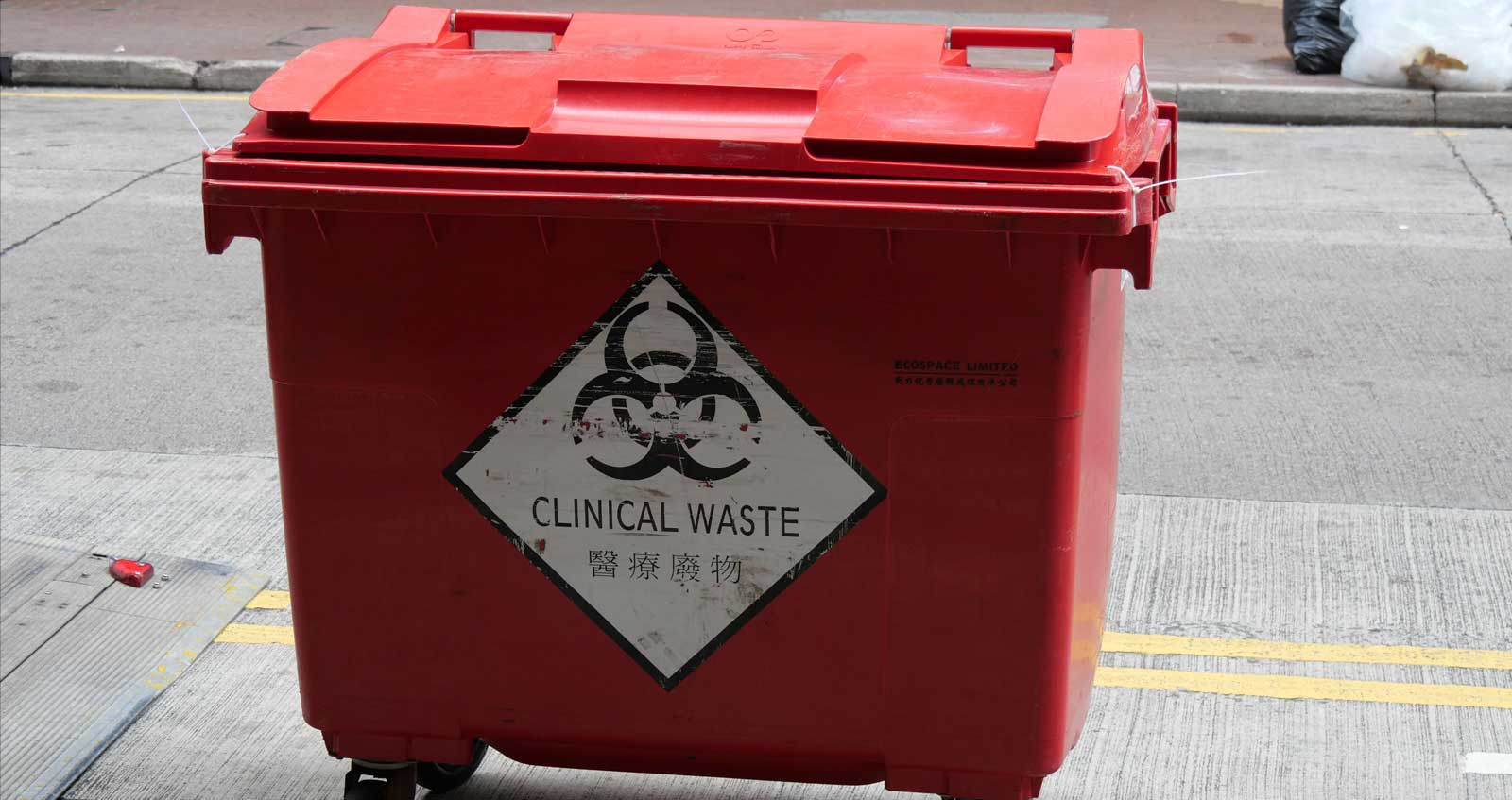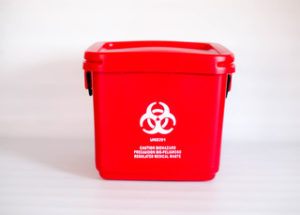Regional Commitment: Your Area's Leading Medical Waste Removal Near Me
Regional Commitment: Your Area's Leading Medical Waste Removal Near Me
Blog Article
Checking Out Various Garbage Disposal Options for a Cleaner Atmosphere
In the pursuit of a cleaner setting, the management of waste disposal has actually emerged as a critical focal factor for sustainable growth. With a wide range of waste disposal alternatives offered, varying from traditional garbage dump approaches to ingenious waste-to-energy modern technologies, the choice of just how we handle our waste has significant implications for our earth's health.
Recycling Approaches
Applying efficient reusing approaches is crucial in reducing waste and promoting sustainability in our setting. Reusing entails the procedure of transforming waste products right into reusable challenge avoid unneeded disposal. Among one of the most typical recycling methods is material recuperation, where materials like paper, plastic, metal, and glass are accumulated, sorted, and refined to develop brand-new items. This procedure not just preserves natural deposits but likewise minimizes power consumption and greenhouse gas emissions connected with producing brand-new products from scratch.
One more important recycling method is composting, which entails decomposing natural waste like food scraps and lawn trimmings into nutrient-rich soil. This process not just draws away natural waste from garbage dumps however also produces an important resource for horticulture and farming. In addition, upcycling is an innovative recycling technique that includes transforming old or discarded materials right into products of better or value. By including these various recycling methods into our waste management methods, we can significantly decrease our environmental footprint and relocate in the direction of a more lasting future.

Composting Methods
Effective waste monitoring practices, such as recycling approaches, lead the way for a cleaner atmosphere, and currently, changing the focus to 'Composting Techniques', we explore lasting methods to break down organic waste for ecological benefit. medical waste removal service.
Composting is a natural process that changes natural waste, like food scraps and backyard trimmings, into a nutrient-rich dirt modification. The secret to successful composting exists in developing the ideal balance of green products, such as vegetables and fruit scraps, and brown materials, like dried out branches and leaves. These products decay with the assistance of bacteria, breaking down the waste into important garden compost.
There are various composting strategies available to suit different demands. Standard backyard composting involves layering natural materials in a container or heap and regularly turning the combination to aerate it. Vermicomposting, on the various other hand, makes use of worms to break down raw material right into garden compost (click here). For those with minimal room, interior composting systems supply a convenient remedy. By utilizing composting strategies, we can minimize the quantity of waste sent to land fills while creating a helpful product for enhancing dirt and sustaining plant growth.
Incineration Cons and pros
Incineration, as a garbage disposal approach, offers both advantages and disadvantages that warrant careful factor to consider in the realm of sustainable waste management techniques. On the silver lining, incineration can substantially decrease the quantity of waste, reducing the need for landfill space and potentially decreasing greenhouse gas exhausts. Incineration also allows for the recovery of power with the generation of power or heat, adding to resource healing. The process can be used to damage harmful compounds, providing a safe technique for dealing with particular types of waste that might present dangers to public health and the environment if left unattended.
Nevertheless, there are noteworthy disadvantages to incineration. One major problem is the possible launch of unsafe toxins right into the air, such as dioxins, hefty steels, and particulate issue, which can have negative results on human wellness and the atmosphere. Furthermore, the high first investment and functional prices of incineration facilities present economic challenges, making it a less cost-efficient alternative compared to other waste administration strategies. Cautious surveillance and regulation are important to alleviate these negative effects and make best use of the benefits of incineration as component of a detailed waste management technique.
Landfill Monitoring Strategies
Garbage dumps play an essential function in waste monitoring and environmental conservation by giving a control system for the disposal of solid waste products. By compacting the waste, the quantity is decreased, permitting for more waste to be suited over time.
In addition, the application of daily cover methods is important in minimizing smells, stopping litter, and reducing the tourist attraction of bugs. Covering the disposed waste at the end of each day aids to consist of smells and stop potential ecological contamination. In addition, the tracking of garbage dump gas emissions and leachate degrees is important in ensuring that environmental criteria are met and that any kind of possible risks to surrounding ecological communities are reduced.

Waste-to-Energy Technologies
Among the ingenious approaches to lose management includes utilizing Waste-to-Energy modern technologies to transform solid waste right into functional energy sources. Waste-to-Energy (WtE) innovations incorporate a range of procedures that intend to extract energy from waste materials with thermal, chemical, or organic means. This conversion process not just minimizes the quantity of waste that finishes up in land fills however additionally generates important energy sources such as electrical power, warm, or biofuels.
There are numerous methods of Waste-to-Energy conversion, including gasification, pyrolysis, and incineration. Incineration entails burning waste at high temperatures to produce have a peek at this site warmth and electricity. Gasification converts waste into a syngas, which can be utilized for power generation or chemical manufacturing. Pyrolysis breaks down organic materials utilizing high temperature levels in the lack of oxygen, generating gas, char, and bio-oil.
Implementing Waste-to-Energy technologies can aid minimize ecological problems connected with conventional waste disposal methods while at the same time offering a renewable resource resource. Nonetheless, mindful consideration must be provided to emissions control and guaranteeing the sustainability of feedstock products for these technologies to be really useful for a cleaner environment.

Verdict
In verdict, discovering numerous waste disposal choices such as recycling, composting, incineration, garbage dump management, and waste-to-energy technologies is crucial for promoting a cleaner setting - click here. Each method has its very own advantages and obstacles, yet by making use of a combination of these approaches, we can function towards lowering the amount of waste that winds up in land fills and ultimately add to a much more lasting future for generations ahead
With a wide variety of waste disposal alternatives available, ranging from typical landfill techniques to cutting-edge waste-to-energy innovations, the choice of exactly how we manage our waste has far-ranging implications for our world's health. medical waste removal service.Incineration, as a waste disposal method, offers both advantages and disadvantages that merit careful consideration in the realm of sustainable waste management practices.Landfills play a critical role in waste management and environmental conservation by providing a containment system for the disposal of solid waste products. By compacting the waste, the volume is lowered, allowing for more waste to be fit over time
One of the innovative approaches to waste monitoring includes taking advantage of Waste-to-Energy innovations to convert strong waste into usable power sources.
Report this page